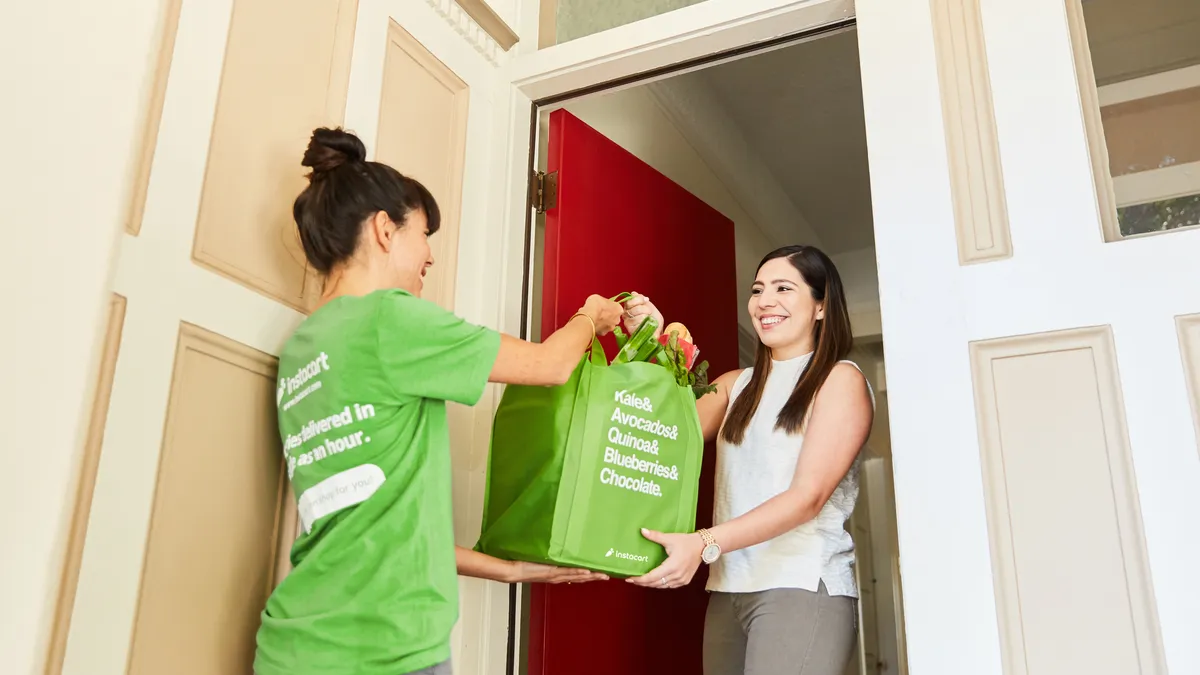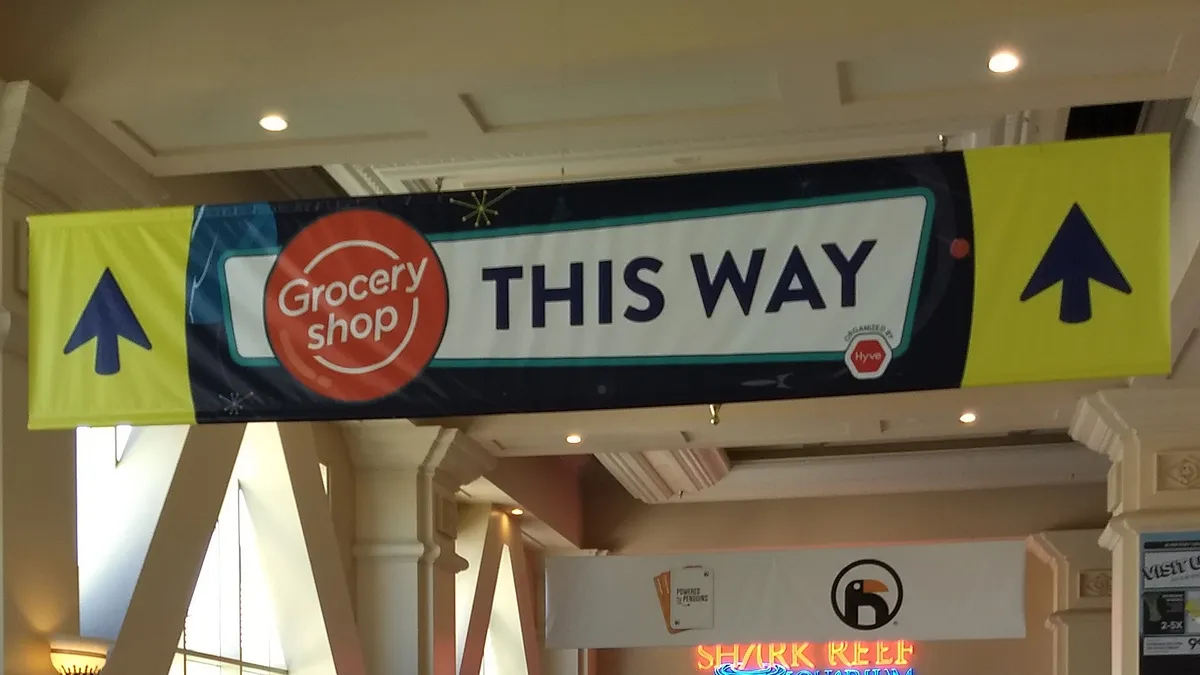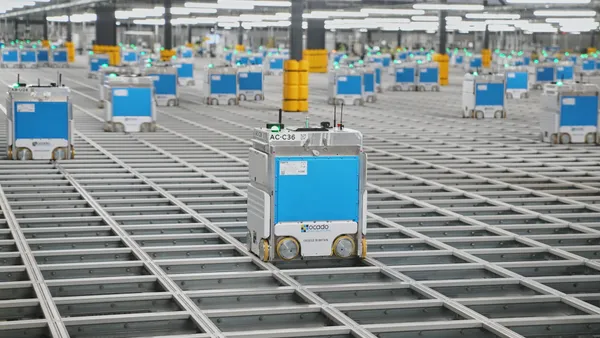As growth in digital grocery sales continues, grocers and retailers must ensure they are revising their digital marketing strategies to attract consumers to the digital shelf. The necessity for a strong marketing strategy to promote a digital retail experience is apparent; online grocery sales were 5.5% of total grocery sales in the United States last year, a jump from 1.8% in 2010. That percentage is expected to grow to 9.9% by 2022.
As digital grocery sales increase, grocers should make efforts to keep beef and meat purchases at the forefront of digital purchases. Carts with beef purchases consistently have a higher value than carts without beef or with beef substitutes, and carts that include beef products produced 44% more sales throughout an entire store than carts with chicken.¹ Though this refers to in-store purchases, it’s possible that high beef sales will also translate to higher cart values on the digital shelf. Some shoppers may be new to ordering beef products online, so consistent and positive consumer experiences, as well as marketing strategies touting the positive aspects of shopping for beef online, are vital, according to Bridget Wasser, Executive Director of Meat Science & Supply Chain Outreach for National Cattlemen’s Beef Association, a contractor to the Beef Checkoff.
“There is a higher barrier to entry for fresh products,” Wasser said. “Customers need a successful experience to start, and a reminder that beef is available to buy on a retailer’s digital channel. Retailers also can inspire the shopper on ways to use their fresh beef purchase.”
In order to find effective beef marketing messages and strategies to boost online sales, Beef. It’s What’s For Dinner. partnered with Instacart, the largest third-party grocery delivery service in North America. Instacart can deliver in as fast as one hour - which means that perishables – including meat – are a higher percentage of sales than other online grocery platforms which deliver within a few days. The results of this partnership offer new ideas for grocers seeking beef marketing strategies conducive to today’s online grocery shopping experience, according to Jennifer Meyer, Head of Brand Partnerships at Instacart.
“We find that the most important first step that a brand or manufacturer can take is to explore the various and growing exposure opportunities offered online,” Meyer said. “These Beef. It’s What’s For Dinner. tests are an excellent example of the kind of testing that helps to define what’s more likely to move the needle for customers online, which can vary based on brand, product, price point and more.”
To gauge ways to increase beef purchases on the Instacart platform across retailers, Beef. It’s What’s For Dinner. ran two tests: one involved a digital banner on the Instacart marketplace, while the other placed physical inserts in customers’ grocery bags. The digital banner tested two different messages, one touting beef’s nutrition attributes and the other focused on beef’s great taste. The physical test allowed for two different types of inserts, a branded Beef. It’s What’s For Dinner. scratch-and-sniff recipe card and a branded phone sleeve designed to protect a phone from cooking messes when using it as a recipe source.
Both marketing tests were successful in driving online grocery sales and attracting new customers to shop for beef online. The digital test boosted weekly sales by more than 25% over the course of the 11-week test period. Physical inserts were also found to drive online sales; 35% of customers who received an insert purchased beef through Instacart in the subsequent 12 weeks. More than half of these customers had not purchased beef through the platform in the past year. Wasser said they’d hoped both physical and digital marketing would be successful.
“Retailers can make sure they’re there at the moment shoppers need them, at multiple points within their shopping cycle. One way to do that is physical material in the shopping bag post purchase, and another may be email marketing,” Wasser said. “There’s probably a lot more room for testing in that regard, and hopefully, tests like this one help bring more actionable marketing insights to light.”
Meyer also noted the success of the physical inserts in driving digital sales and detailed the different ways they could be used.
“We view inserts as a surprise and delight moment for customers that drive awareness for products and encourage future purchases,” Meyer said. “Digital campaigns, like the banners and dedicated landing page we ran with Beef. It’s What’s For Dinner. on the Instacart marketplace, drive impulse purchases in real-time on the platform.”
The digital banner tests revealed that more than 30% of purchases through the Instacart platform were made by customers who hadn’t purchased beef on the Instacart marketplace in the past year, indicating that new marketing strategies could attract consumers who may have shied away from online purchasing recently. Above all, Wasser said it’s vital for grocers to understand the benefits of retaining strong beef sales.
“I think for retailers, it’s important to remember the value of beef to the retail basket,” she said. “If they aren’t in front of their shoppers with great offerings in the growing space of e-commerce, then someone else will be.”
¹ IRI Panel Data, Market Basket Study, February 2019










